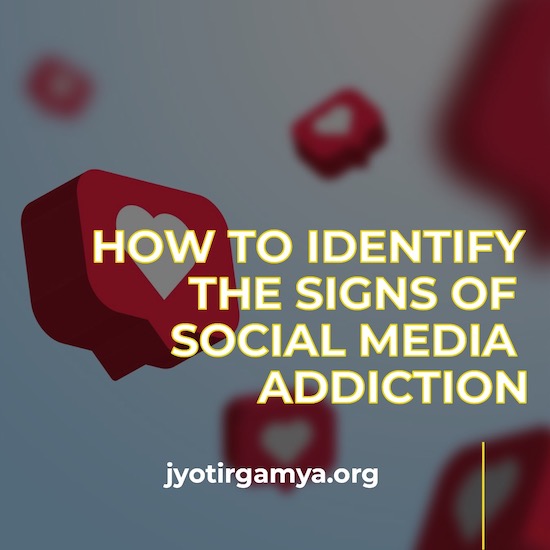Social Media Addiction Symptoms: Guide to Identifying Signs and Seeking Help
Story : The Rabbit who Stood Up to the Bully
Samantha was once a kind and compassionate vixen, but she was traumatized when the Fox she was married to chose another vixen; it twisted her heart and filled her with bitterness. She now sought solace in power and control, and she used social media to exploit the vulnerabilities of naive animals addicted to social media.

One of Samantha’s targets was a gentle and empathetic rabbit named Willow. Social media easily influenced Willow, and Samantha used this to her advantage.
Samantha’s undue flattery, likes, and comments on Willow’s account smote him. Samantha was already an influencer and used her account to spread misinformation and rumors about Willow. She also used manipulative posts to isolate Willow from his friends and family.
At first, Willow was unaware of Samantha’s manipulation. But as time passed, he began to suspect something was wrong. He confided in Elder Owl, who helped him to see through Samantha’s deception.

Willow realized that he must confront Samantha and break free from her control. He gathered evidence of Samantha’s crimes and spoke to her. Samantha was enraged, but Willow refused to back down. He rallied the other animals to join him in the fight against Samantha.
One night, Samantha confronted Willow in the forest. She confessed to everything she had done and threatened to wreck Willow’s reputation if he didn’t do as he was told. Willow stood up to Samantha and refused to be intimidated. He told Samantha that he would expose her crimes to the entire community.
Samantha was furious. She attacked Willow, but Willow fought back. The other animals, alerted to the commotion, arrived and helped to subdue Samantha.
The next day, the animals gathered in the town square to hear Willow’s account of Samantha’s crimes. Samantha was found guilty of her crimes and was sentenced to exile from the community.
Willow was hailed as a hero for her courage and determination. She learned a valuable lesson about the dangers of social media addiction and the importance of standing up to bullies.
As Samantha was forced to wander the forest alone she reflected on her actions. She realized she caused a lot of pain and began to feel remorse.
One day, Samantha came across the Elder Owl. She confessed her sins to him and asks for his forgiveness. Elder Owl saw that Samantha was genuinely sorry, and he agrees to help her.
Elder Owl taught Samantha about the dangers of social media manipulation. He also helped her understand her traumas and learn to cope healthily.
Over time, Samantha transformed into a kind and compassionate animal. She returned to the community and apologized for her past actions. The animals forgave her, and she was welcomed back into the community.
Social media can be a powerful tool for good or evil, but it is important to use it wisely.
Samantha used social media to manipulate and exploit others, while Willow used it to stand up to bullying and protect the community. This story teaches us that we have the power to choose how we use social media, and that we should use it to promote kindness and compassion instead of getting addicted and falling prey to deceptive tricks of shrewd characters.
Introduction
In today’s highly connected world, social media is a big part of our lives. It helps us communicate, connect with others, and share information. But using social media too much can turn into a problem known as social media addiction. This happens when someone can’t control how much they use social media, and it can harm their mental health and overall well-being.
Social media addiction isn’t just spending a lot of time online; it’s a behavior problem where a person loses control over their social media use. People with this addiction feel a strong need to check their social media accounts all the time, put more importance on online interactions than real-life relationships, and feel bad when they can’t use social media.
It’s important to recognize the signs of social media addiction to promote digital well-being and address possible mental health issues. By understanding the symptoms and getting professional help, individuals can take back control of their social media use and have a healthier relationship with technology.

Understanding the Underlying Mechanisms of Social Media Addiction
The pervasiveness of social media addiction has spurred scientific inquiry into its underlying mechanisms, revealing a complex interplay of psychological and neurological factors.
Reward System and Dopamine Release
Social media taps into the brain’s reward system, a neural circuit that mediates pleasure and reinforcement. Every social media interaction, whether a ‘like,’ a comment, or a notification, triggers the release of dopamine, a neurotransmitter associated with reward and motivation. This dopamine surge creates a sense of gratification, reinforcing the behavior and prompting continued engagement. Over time, this cycle of reward and reinforcement can lead to compulsive social media use, characteristic of addiction.
Validation and Fear of Missing Out (FOMO)
Social media platforms provide constant social validation through likes, comments, and shares. This external validation feeds into our innate need for belonging and acceptance, making social media a potent source of gratification. However, this dependence on external validation can lead to insecurity and low self-esteem, further fueling the need for social media engagement.
FOMO, or the fear of missing out, is another psychological factor that contributes to social media addiction. The constant stream of curated content and social interactions creates a perception that others are having more fulfilling experiences, leading to feelings of inadequacy and anxiety. This fear drives individuals to compulsively check their social media accounts, seeking reassurance and connection.
Personality Traits and Susceptibility to External Pressures
Personality traits such as neuroticism, introversion, and low self-esteem can increase an individual’s susceptibility to social media addiction. Neuroticism, characterized by emotional instability and anxiety, can lead to social isolation and a reliance on social media for connection. Introverts who prefer solitude may find social media a comfortable and less demanding interaction. Low self-esteem can make individuals more vulnerable to the external validation and social comparison that social media platforms provide.
In addition to personality traits, external pressures such as social norms and peer influence can also play a role in shaping addictive tendencies. The constant exposure to idealized portrayals of life on social media can create unrealistic expectations and pressure individuals to conform to these standards, leading to excessive social media use to maintain their online persona.
Identifying the Warning Signs of Social Media Addiction
Social media addiction, though not yet officially recognized as a clinical disorder, is a growing concern among mental health professionals and researchers. Recognizing the signs of addiction is crucial for early intervention and preventing its detrimental effects on mental health and overall well-being.
Common Signs and Symptoms
Excessive Time Spent on Social Media: An individual spends an excessive amount of time on social media, even to the detriment of other essential activities such as work, studies, or personal relationships.
Preoccupation with Social Media: Social media becomes a constant focus of thought, even when not actively used. Individuals may find themselves repeatedly checking for notifications, anxiously anticipating new interactions, or constantly thinking about curating their online persona.
Neglected Responsibilities: Social media use interferes with daily responsibilities, leading to missed deadlines, poor work performance, or strained relationships. The compulsive need to engage with social media overrides the importance of other commitments.
Withdrawal Symptoms: When unable to access social media, individuals experience withdrawal symptoms such as anxiety, irritability, restlessness, or even physical discomfort. These symptoms highlight the dependence on social media for emotional regulation and gratification.
Failed Attempts to Reduce Usage: Despite recognizing the negative impacts of social media use, individuals cannot control their behavior and consistently fail to reduce time spent on social media.
Distinguishing Social Media Addiction from Excessive Use
Social media addiction, characterized by compulsive and uncontrolled social media engagement, is distinct from mere excessive use. While occasional periods of heavy social media use may occur without indicating addiction, it is the severity and impact of social media use on an individual’s overall well-being that determines whether it crosses the threshold into addiction.
Excessive Social Media Use
Excessive social media use refers to spending an inordinate amount of time on social media platforms, often to the detriment of other essential activities or responsibilities. This excessive use may be driven by boredom, procrastination, or a desire to stay connected with friends and family. While excessive use can be problematic, it does not necessarily indicate an underlying addiction.
Social Media Addiction
Social media addiction, on the other hand, is a more severe and debilitating condition. Individuals with social media addiction experience a loss of control over their social media behavior, prioritizing it over real-life relationships, work, and personal responsibilities. They may experience withdrawal symptoms when unable to access social media, and their social media use continues despite negative consequences in other areas of their lives.
Impact of Social Media Addiction on Daily Life
Social media addiction, characterized by compulsive and uncontrolled social media engagement, can have a profound and detrimental impact on various aspects of daily life, disrupting academic performance, work productivity, personal relationships, and overall emotional well-being.
Academic Performance
Social media addiction can severely hinder academic performance by diverting attention from studies and creating distractions during study sessions. The constant urge to check social media notifications, engage in online interactions, or curate one’s online persona can significantly reduce the time and focus on academic pursuits. This disruption in study habits can lead to decreased academic engagement, poor grades, and increased stress.
Work Productivity
Social media addiction can also impair work productivity by interfering with work tasks and creating a constant source of distraction. Employees struggling with social media addiction may find themselves checking their social media accounts frequently during work hours, prioritizing online interactions over work responsibilities. This divided attention and lack of focus can lead to missed deadlines, decreased productivity, and potential disciplinary action.
Personal Relationships
Social media addiction can strain and damage personal relationships by reducing the time and quality of face-to-face interactions. The excessive time spent on social media can lead to a neglect of real-life relationships, causing feelings of isolation, resentment, and misunderstandings among family members, friends, and romantic partners. Social media addiction can also create unrealistic expectations and comparisons, leading to dissatisfaction with real-life relationships and further intensifying feelings of loneliness and isolation.
Emotional Toll
Social media addiction can take a significant toll on emotional well-being, contributing to anxiety, depression, and feelings of inadequacy. The constant stream of idealized and curated content on social media can lead to feelings of inferiority and low self-esteem as individuals compare their lives to the seemingly perfect lives portrayed online. This social comparison can trigger anxiety, depression, and a sense of inadequacy that can be difficult to manage.
Seeking Help for Social Media Addiction
Social media addiction can be a debilitating condition that significantly impacts an individual’s daily life and overall well-being. Recognizing the signs of addiction and seeking professional help is crucial for reclaiming control over one’s digital habits and restoring a sense of balance and well-being.
Mental Health Professionals
Mental health professionals, such as psychologists, therapists, and counselors, can provide comprehensive assessment and treatment for social media addiction. They can help individuals understand the underlying causes of their addiction, develop strategies for managing social media use, and address any co-occurring mental health issues such as anxiety or depression.
Support Groups
Support groups help people dealing with social media addiction by providing a safe space to connect with others facing similar challenges. Sharing experiences and learning coping strategies in these groups can be valuable for overcoming addiction.
Online counseling services offer convenient mental health support for those without local resources or who prefer online therapy. These services connect individuals with licensed therapists specializing in social media addiction, offering sessions through video conferencing or text platforms.
Social media addiction may indicate underlying mental health issues like anxiety or depression. Treating these issues is vital to effectively address addiction. Mental health professionals can provide individual or group therapy and medication management for co-occurring conditions.
Taking the First Step
Seeking help for social media addiction can be a daunting task, but it is an essential step towards reclaiming control over one’s life and improving overall well-being. Individuals struggling with addiction should not hesitate to reach out for help from mental health professionals, support groups, or online counseling services. With appropriate treatment and support, individuals can overcome social media addiction and develop healthier patterns of digital engagement.
Preventive Strategies to Manage Social Media Usage
As social media becomes an increasingly integral part of our lives, it is crucial to adopt preventive strategies to manage social media usage and minimize the risk of developing an unhealthy addiction. Implementing these strategies can help individuals maintain a healthy relationship with technology and foster overall well-being.
Mindfulness Techniques
Mindfulness practices can cultivate awareness of one’s thoughts, feelings, and behaviors, enabling individuals to recognize the triggers that lead to excessive social media use. Techniques such as meditation, mindful breathing, and body scans can help individuals identify social media engagement patterns and make conscious choices about their online behavior.
App-Based Limitations
Numerous smartphone applications can help individuals monitor and manage their social media usage. These apps can set time limits for specific social media platforms, provide notifications when usage exceeds predetermined limits, and even block access to social media during designated times. Utilizing these tools can help individuals regain control over their social media habits and reduce overall online time.
Establishing Healthy Digital Boundaries
Establishing clear boundaries between social media and other aspects of life is essential for maintaining a healthy balance. Designating specific times for social media use, creating social media-free zones such as bedrooms or dining areas, and engaging in offline activities help reduce the constant presence of social media in one’s life.
Participating in Offline Activities
Engaging in offline activities that foster social connections and personal fulfillment can help individuals reduce their reliance on social media for these purposes. Joining clubs, pursuing hobbies, volunteering in the community, and spending time with loved ones can provide a sense of belonging, purpose, and satisfaction, lessening the need for social media to fulfill these needs.
By incorporating these preventive strategies into daily life, individuals can proactively manage their social media usage, minimize the risk of addiction, and maintain a healthy balance between their digital and offline worlds.
Promoting Digital Well-being
Technology has become an indispensable tool in an increasingly interconnected world, impacting virtually every aspect of our lives. While technology offers numerous benefits, fostering a holistic approach to digital well-being is crucial, ensuring that our digital engagement enhances, rather than detracts from, our overall well-being.
Cultivating a Healthy Relationship with Technology
Achieving digital well-being requires consciously cultivating a healthy relationship with technology. This involves recognizing the positive aspects of technology while being mindful of its potential drawbacks. Setting boundaries, avoiding distractions, and prioritizing real-world interactions are essential to maintaining a balanced and fulfilling life.
Prioritizing Real-world Interactions
While virtual connections can be valuable, face-to-face interactions are essential for fostering deeper connections, strengthening relationships, and promoting emotional well-being. Prioritizing real-world interactions, such as spending time with loved ones, participating in community activities, and engaging in hobbies, can provide a sense of belonging, purpose, and fulfillment that is often lacking in solely digital interactions.
Self-care, Stress Management, and a Healthy Lifestyle
Digital well-being is intricately linked to overall well-being. Engaging in self-care practices, such as exercise, relaxation techniques, and adequate sleep, can enhance resilience and reduce stress, making it easier to manage digital engagement healthily. Maintaining a balanced lifestyle, including a healthy diet and regular physical activity, can contribute to overall well-being and reduce the likelihood of developing negative digital habits.
Redefining the Digital Landscape
Promoting digital well-being requires a collective effort to create a digital landscape that supports healthy and meaningful engagement. This includes encouraging technology companies to design products and services that prioritize well-being, promoting responsible digital citizenship education, and fostering open dialogues about the impact of technology on our lives.
By adopting a holistic approach to digital well-being, we can harness the power of technology while safeguarding our mental health, fostering meaningful connections, and cultivating a balanced and fulfilling life.
Conclusion
Recognizing signs of social media addiction is important for digital well-being and mental health. If you spend too much time on social media, think about it a lot, or feel bad when you can’t use it, pay attention. Get help from mental health professionals, support groups, or online counseling to overcome addiction and use social media in a healthier way.
To prevent addiction, try mindfulness, use apps to limit time, set healthy digital boundaries, and do offline activities. Build a good relationship with technology, focus on real-world interactions, and take care of yourself for overall well-being.
Taking a holistic approach to digital well-being means using technology wisely for better mental health, meaningful connections, and a balanced life. Being mindful and balanced with technology helps you navigate the digital world well, making sure it adds to your well-being instead of taking away from it.
Further Reading
-
Emotional Well-Being through Brain Waves: Managing Stress and Emotions
-
Understanding the Differences Between Neurosis and Psychosis
-
The Ultimate Guide to Remote Work Burnout : 10X Bee vs 0.1X Butterfly
-
The 10X Rule Unveiled: Exploring Grant Cordone’s Approach to Success and Evidence-Based Alternatives
That’s all in this edition.
If you liked reading the article, do share it with folks who would benefit from it.
Want to stay connected? Here’s our twitter.